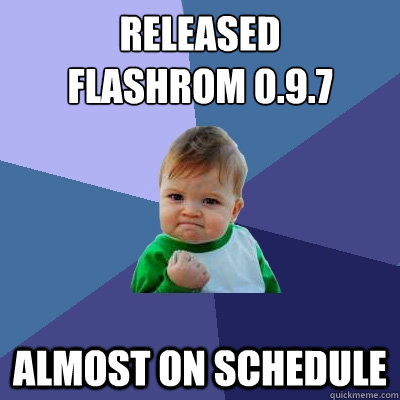Hi All, I am Naman Govil from India and I will start working with coreboot this summer as a part of Google Summer of Code-2014. I am a junior year undergrad from International Institute of Information Technology, Hyderabad (IIIT-H), pursuing my majors in Electronics and Communication Engineering. I have been actively dealing with programmable devices ever since the start of my program. I am a hardware designer at heart, and getting a chance to combine hardware with programming makes for an interesting and gripping combo for me- enter coreboot! 😀
While searching for appropriate orgs to pursue a GSoC project, I stumbled upon coreboot. Open BIOS had a ring to it and so I decided to see the projects done here. It gripped me instantly. I was pretty confident to pursue my project here and got to work early.
This summer, I will be doing a project on providing a generic Interface based on CBFS access patterns for ARM SoCs. The aim would be to optimize and enhance the CBFS_media interface used for accessing data, currently in x86 systems, to suit low-end ARM SoCs. An ARM-specific CBFS access pattern would enable coreboot to load its stages efficiently, which will form the basis for establishing full support for coreboot on SoCs, and in-turn help bridge the gap between coreboot and ARM mainboards. The chosen ARM board for this project is a cubieboard 1.0, due to its existing support for coreboot.
There will two main targets to improve the CBFS access. First, to reduce the size of buffers used to read data, thus reducing wastage of ram. Next, the current API for uncompressing a file to a location requires that the entire deflated source needs to be in memory. The second and more important objective would be to bring a pipelined decompression strategy.
The last part of the project will be to have management of the resources being used, i.e avoiding any memory leakings while executing commands.
Project Deliverables would include:
- A CBFS access mechanism (for when the underlying medium is not memory mapped, unlike for x86 systems), which will allow ARM-based SoCs, for example: the Cubieboard, BeagleBoard, etc to boot efficiently.
- The API would be tested with a back-end,like the MultiMedia Card, to demonstrate and debug the generic interface.
- The verification step is to compare the size of the cbfs cache required for the cubieboard using this access method with the old one. In the end it should be dramatically reduced.
- By the end, we will have a reliable method to boot coreboot on ARM SoCs.
I hope I can complete the project satisfactorily and have a great learning experience with the community. Waiting for an awesome summer ahead! 😀

